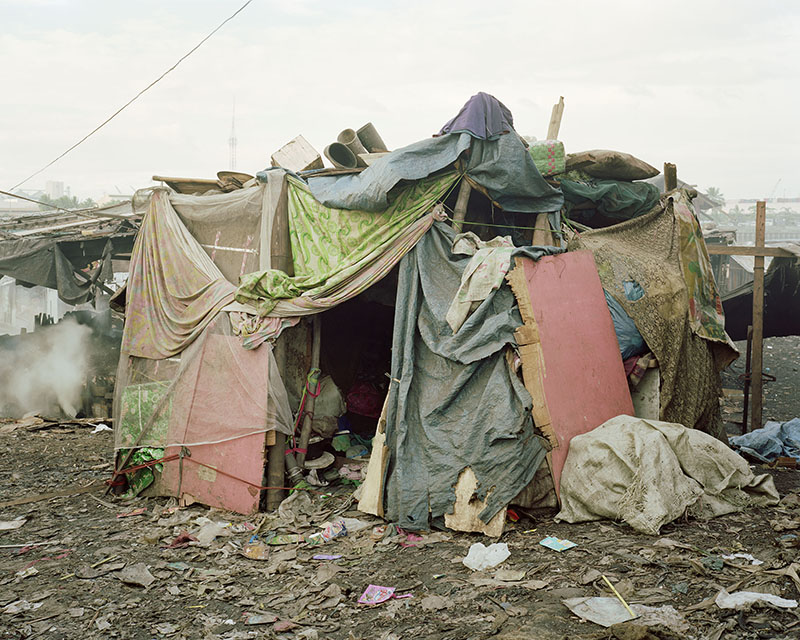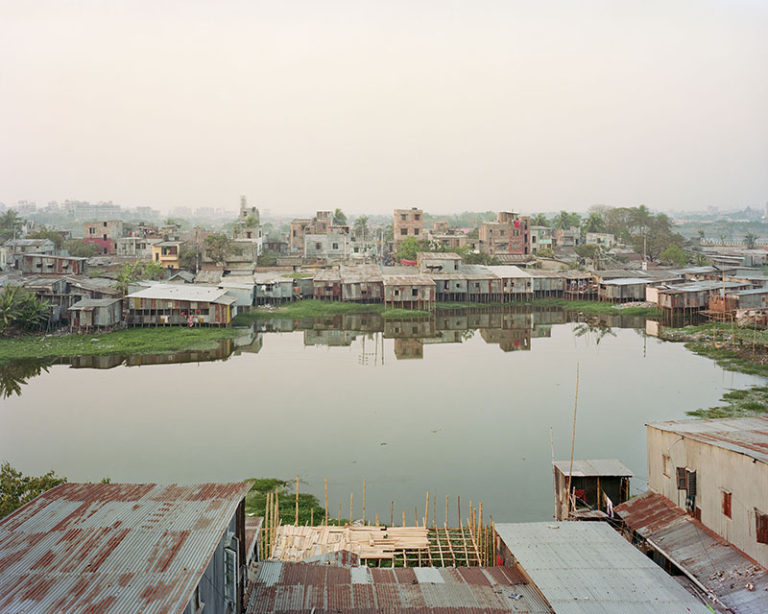Most people, when confronted with the mind-bending vastness and ubiquity of urban slums, experience some amalgam of shock, disorientation, fear, recoilment, sympathy and outrage. Witnessing a veritable sea of lean-to huts with house-of-card engineering expand into the middle and far distance, often with the turrets of polite society peeking up at the edges, can take your breath away. But photographer Noah Addis sees it differently. He has written eloquently about the adept repurposing and creative survival strategies demonstrated in such communities; and he is also an active advocate for more responsible, empathetic social policies. In works made from 2010–13 Addis documents international sites in Mumbai, Dhaka, Manila, Lima, Estado de Mexico, Cairo and other cities with particularly massive favela or shantytown areas. Addis refers to them as “informal settlements,” which from the start strikes a tone of progressive empathy. In addition to the social, economic and policy critique inherent in its premise, in this project the artist perceives the opportunity, “to see what can be learned from them about urban planning and sustainable development.” He also creates affecting, works of art.
Although some compositions have figures and many include elements of the landscape, the predominant motif in “Future Cities” is architectural. Addis sets up his shots, whether sweeping or intimate, with compelling angles, strong sight-lines, and emotional details rendered by the human touch. Even amid the dirt, dust and neglect, audiences find the spark of innovation, creativity, and the impulse to beautify one’s surroundings to whatever degree possible. Or maybe it’s simply materialist accidents born of necessity that yield such fascinating fractal, organic results. Trying to figure out what the structures are made of lends an additional narrative and encourages a deeper commitment to attention; it also gives a new sense to the concept of vernacular architecture, not to mention the use of recycled/adaptive materials.
Decoding the wide-view images like Lallubhai Compound Eviction #1, Mankhurd, Mumbai (2011) is like counting the matchsticks in a 40-foot pile. In the single-dwelling closeups, which have the deep character of portraiture, it’s the manipulation of found materials that engages the imagination, for example the pattern of the tent fabric in Rebuilt Home #1; Lallubhai Compound, Mumbai (2011). Sometimes the horizon is lush and tree-lined, sometimes it’s smog-obscured, always it is distant. One image depicts a single figure alone on a high-perched concrete court above a mountain range (Luis Fernando Vasquez plays football in the La Pradera Settlement, Lima, 2010). Another surveys a crowd living in lean-tos on both sides of gorgeous tree-lined railroad tracks (Nakhalpara #1; Dhaka, 2013). Many walk away from the camera, heading toward the receding perspective resolution of the tracks and horizon. It looks for all the world like a classic European painting of a market road heading toward the town center, or toward the future.



